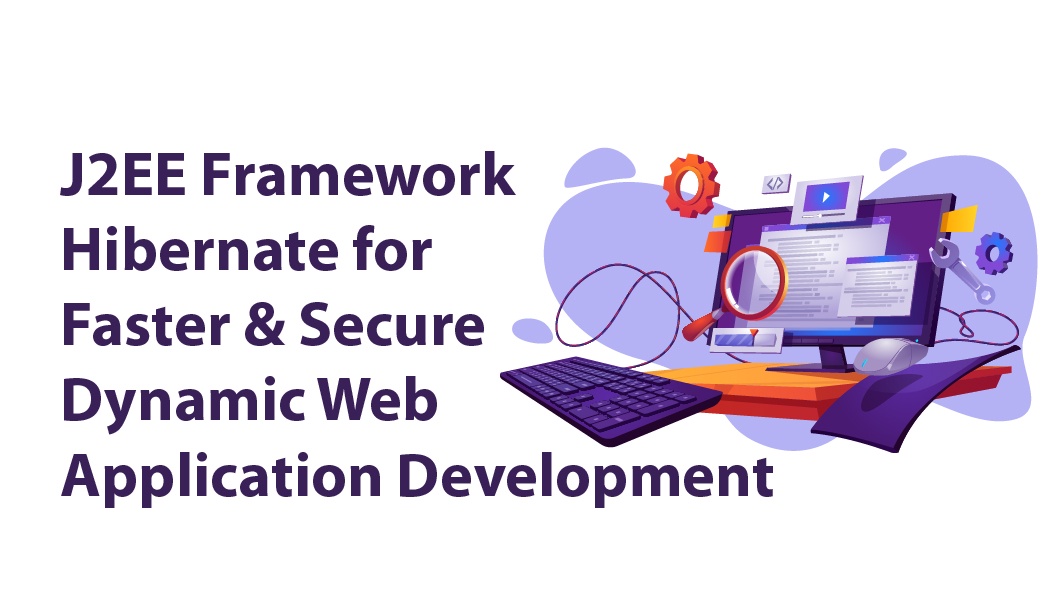What Is J2EE Framework?
A framework is essentially a piece of software that provides an abstraction over several technologies such as JDBC, servlet, and so on. J2EE is a set of specifications that specify the standard for creating multi-tier enterprise Java applications.
The J2EE platform provides a comprehensive framework for designing, developing, assembling, and deploying Java applications based on a multi-tiered distributed application model.
J2EE In Web Applications
J2EE (Java 2 Platform Enterprise Edition) is a cross-platform environment for configuring web-based enterprise applications. It includes several APIs, protocols, and a run-time environment for developing network-based web services.
- It develops multi-tiered systems, as well as large-scale, dependable, and secure network applications.
- J2EE benefits include enterprise applications that are dependable, secure, and scalable.
- It increases a programmer's productivity.
- J2EE can run on a variety of systems.
- It is transferable across devices, manufacturers, and servers.
- J2EE allows developers to create apps that work effectively on both single-processor machines and multi-processor systems and hence it is scaleable.
- J2EE includes many of the services such as transaction management and monitoring that applications require to be dependable.
- Java technology allows programmers to handle sensitive data significantly more securely than C/C++ does.
- The logic is stored in a separate layer with EJB (Enterprise Java Beans). JDBC (Java Database Connectivity) is a method for connecting an application to a database.
The J2EE platform offers options for graphical user interfaces that can be used within a company's intranet or on the World Wide Web. Clients can run on desktop computers, laptop computers, PDAs, cell phones, and other devices. Standard HTML and Java applets can be used for pure client-side user interfaces.
What Is Hibernate Framework?
Hibernate is a Java framework that includes an abstraction layer and handles implementations internally. Implementations include duties such as producing a query for CRUD operations or connecting to databases, among others.
Hibernate is used in several large organizations' tech stacks, including Platform, Daily Hotel, IBM, and Dell. It simplifies application development through features such as database interactivity and many more.
A reliable, lightweight ORM Java framework that can interface with any database and is particularly useful when working with several databases. Working with Hibernate is enjoyable because of its robust APIs and a variety of handy tools such as the Mapping Editor, Wizards, and Reverse Engineering.
Hibernate and Its History
Gavin King and colleagues from Cirrus Technologies founded Hibernate in 2001 as an alternative to utilizing EJB2-style entity beans. The initial intention was to provide stronger persistence capabilities than EJB2. In early 2003, the Hibernate development team began releasing Hibernate2. In 2005, Hibernate 3.0 was released. In the year 2018, Hibernate ORM 5.4.0 Final was released.
How Does Hibernate Function?
Hibernate is a free and open-source Object-Relational Persistence and Query service that may be used by any Java application. Hibernate converts Java classes to database tables and Java data types to SQL data types, relieving the developer of the majority of conventional data persistence programming duties.
Hibernate sits between typical Java objects and the database server, handling all aspects of object persistence based on the necessary O/R techniques and patterns.
Why Should You Utilize Hibernate?
- Hibernate lowers code lines by maintaining object-table mapping and returning results to the application in the form of Java objects.
- It frees programmers from having to manually handle persistent data, lowering development time and maintenance costs.
- Hibernate creates persistence logic that stores and processes data for later use.
- It is a lightweight ORM tool that is also open-source, giving it an advantage over other frameworks.
- Hibernate is database independent, meaning it is not dependent on the database engine at the backend.
- Hibernate is a completely open-source project. Hibernate avoids redundancy by using the JDBC API.
- Hibernate is a standard ORM solution with JPA support. As a result, employing hibernate allows you to exploit all of the advantages of ORM and JPA in JPA-specific projects.
Hibernate has merged with the most dependable connection pool implementation automatically (C3P0). Since Hibernate is a layered architecture, we are not required to use all that Hibernate provides. We just use those features that you may believe are unnecessary for the project.
Hibernate Framework and its Benefits
- Lightweight and simple to scale up, change, and configure. With a little coding, complex data manipulation is possible.
- High productivity and portability; used for both RDBMS and NoSQL databases. Excellent command-line tools and IDE plugins that enhance your experience.
- Hibernate boosts productivity and reliability.
- Persistence APIs are supported.
- The ORM in Hibernate provides communication between the application and any database.
- Scalability
- Auto-Generation
- High-Efficiency HQL
Latest Industry News
- Hibernate ORM 6.1.4 Final was released in October 2022.
- Companies that are currently using J2EE are Dematic, PNC, Dell, Western Union, etc.
- Collections related to J2EE
- Oracle Corporation (vendor)
- COMPANIES - 1,886,510
- PRODUCTS - 596
Career Opportunities
Hibernate is a popular expertise among Java developers. J2EE is a platform for developing enterprise-scale distributed applications that are deployed as particular Web application servers such as BEA Web logic. J2EE applications can be easily exposed to the Web, Palm, as well as mobile phones.
Job roles can be:
- Backend Application Developer
- Java Developer
- Full Stack Developer
Cranes Varsity is the top Java Development Training Institute. Cranes offers training in all key areas to help engineers construct Java-based applications that satisfy industry standards. We provide students with an organized framework to help them improve their technical skills and knowledge curve. We want to help pupils develop more powerful knowledge representations in their heads.
The courses offered by Cranes are:
- PG Diploma in Full-Stack Java Development
- Internship in Full-Stack Java Development
To improve your skills in J2EE Framework Hibernate, Cranes Varsity is one of the best institutes to learn. With our experienced and talented trainers, you are guaranteed a job in your dream company.


No comments yet